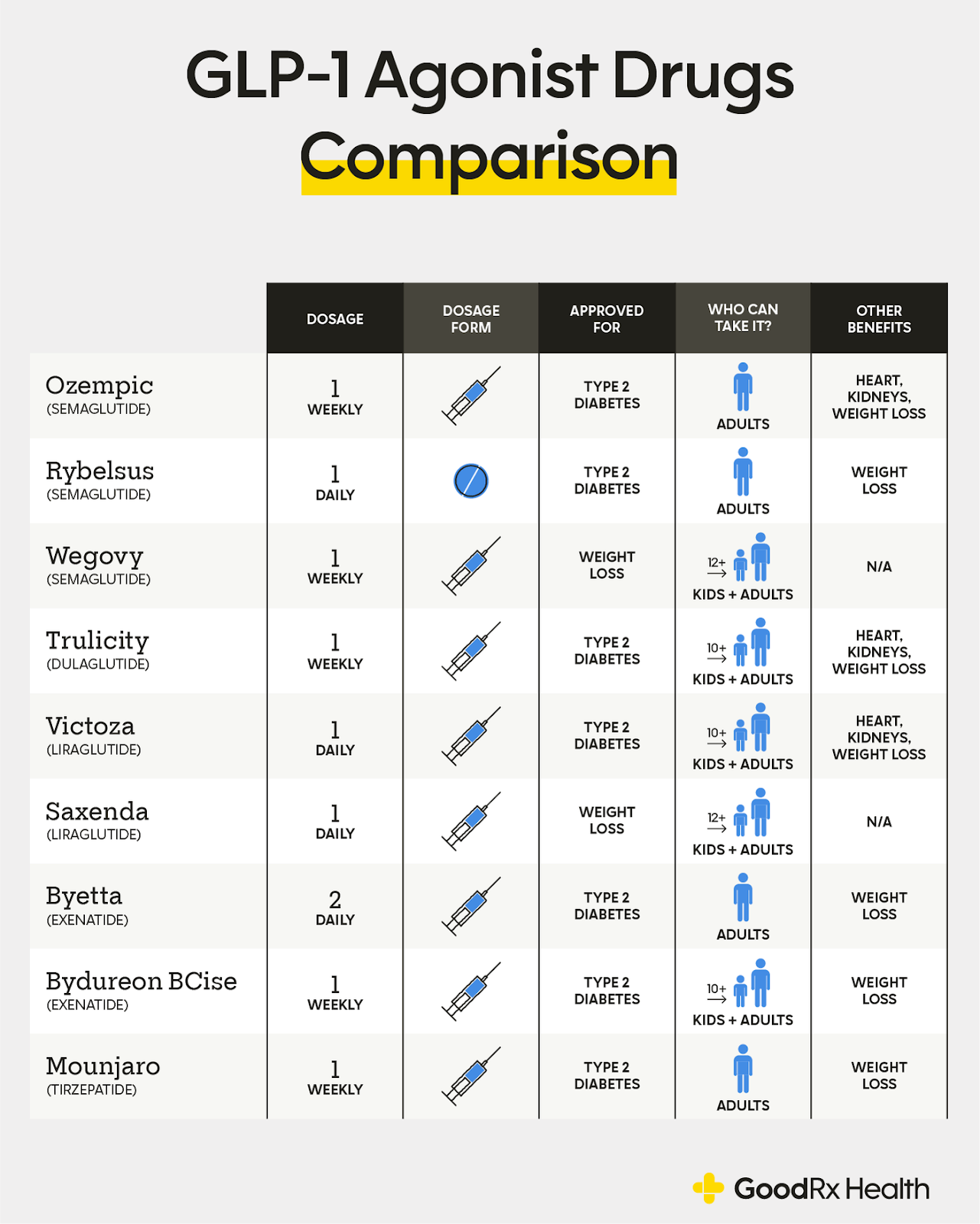What are GLP-1 Agonists?
Written by Aarushi Rai
Recent breakthroughs in medications for weight loss and Type 2 Diabetes have become mainstream, and one of the most popular among them are GLP-1 agonists. This is a class of medications that help blood sugar levels in people with T2D and with losing weight for obesity. These are usually injectable, given in fatty tissue above the skin. The medications are still somewhat new, as the Food and Drug Administration of the USA approved the first GLP-1 Agonist in 2005. The frequency of the injections depends on the specific GLP-1 agonist, varying from twice a day to once a week.
To understand GLP-1 agonists, it is important to first understand its source. The naturally occurring GLP-1 hormone is made by the small intestine and triggers insulin (the hormone that lowers the amount of glucose/sugar in the blood) release from pancreas, blocking glucagon (hormone used to raise blood sugar levels) secretion, slowing sugar emptying (as slower digestion means the body will release less glucose from food into bloodstream), and increasing satiety (how full one feels after eating). Secondly, an agonist is a manufactured substance that attaches to a cell receptor and causes the same action as a naturally occurring substance, so the GLP-1 agonist medications mimic the GLP-1 hormone. GLP-1 agonists bind to GLP receptors to trigger the effects of the GLP-1 hormone.
GLP-1 agonists help patients with type 2 diabetes by managing their blood sugar by triggering the pancreas to release more insulin. It is recommended by healthcare providers, however, if metformin (a common oral medication for diabetes) does not work or is unsafe, or if a patient hasn’t reached or has highly surpassed their target A1C level. For people with Type 1 diabetes, research is still being conducted into the safety and effectiveness of GLP-1 agonists, but they have not yet been approved as a treatment by the FDA. A famous GLP-1 agonist that has become mainstream as a medicine for diabetes but is also used for weight loss and obesity is Semaglutide, also known as Ozempic.
There are many potential benefits of GLP-1 agonists in addition to aid with blood sugar levels and weight loss, such as lowering blood pressure, reducing risk of heart and kidney disease, etc. The most common side effects include a loss of appetite, nausea, vomiting, and diarrhea. Rarely are there more serious side effects like pancreatitis or acute kidney injury.
References
“GLP-1 Agonists” my.clevelandclinic.org/health/treatments/13901-glp-1-agonists. Accessed 28 July 2024.
NCBI Bookshelf, 28 July 2024, www.ncbi.nlm.nih.gov/books/NBK551568/. Accessed 28 July 2024.
“Please verify you are a human” www.goodrx.com/classes/glp-1-agonists/glp-1-drugs-comparison. Accessed 28 July 2024.
Written by Aarushi Rai from MEDILOQUY


